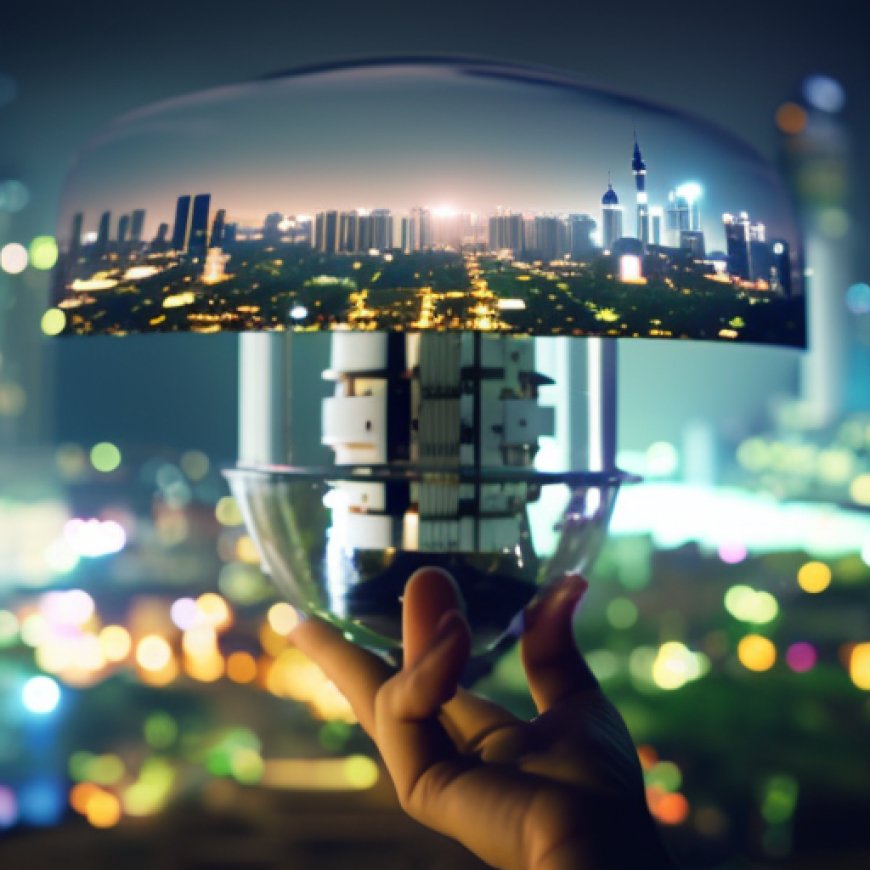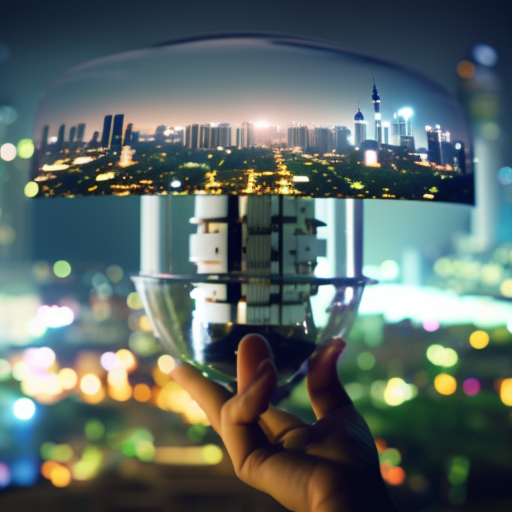Malaysia commits RM2b in seed funding for energy transition projects | Spectra
Malaysia commits RM2b in seed funding for energy transition ... Spectra


The Malaysian Government Commits RM2 Billion in Seed Funding for Energy Transition Projects
This article was licensed through Dow Jones Direct. The article was originally published on Business Times Singapore.
Introduction
The Malaysian government has announced that it will allocate RM2 billion (S$582 million) as seed funding for the National Energy Transition Facility. This funding aims to enable catalytic blended finance for energy transition projects, as stated by Prime Minister Anwar Ibrahim at an energy conference in August.
The National Energy Transition Facility
The National Energy Transition Facility aims to ensure a seamless flow of financial resources towards energy transition projects that are marginally bankable or yielding below-market returns. Examples of potential investments include the electric vehicle (EV) value chain, hydrogen, carbon capture, usage and storage technologies.
National Energy Council and Roadmap
To ensure holistic energy planning and policy development, a National Energy Council will be established. This council will play a crucial role in overseeing the implementation of the National Energy Transition Roadmap (NETR), which was launched last month. The NETR aims to accelerate Malaysia’s energy transition and achieve net-zero emissions by 2050.
Energy Exchange and Green Hydrogen
As part of the NETR, an energy exchange will be established by end-2023 or early 2024. This exchange will act as a market aggregator, enabling price discovery and monetizing excess power by exporting it to neighboring countries. Additionally, Malaysia is exploring the potential of green hydrogen as a fuel alternative and aims to become a major export hub for green hydrogen by 2027.
Renewable Energy Progress
Malaysia has recognized the importance of renewable energy since the 1990s, naming it as the fifth fuel under the National Energy Policy. Currently, 25% of the country’s energy supply comes from renewable energy sources such as solar, hydro, biomass, and biogas. The government aims to source 31% of its power from renewables by 2025 and 40% by 2040.
International Collaboration and Investment
Anwar Ibrahim highlighted strong international interest in collaboration related to decarbonization. According to an International Energy Agency report, investment in clean energy is expected to reach US$1.7 trillion in 2023. This presents vast opportunities across the clean energy supply chain, from solar panel manufacturers to EV charging facilities and battery energy storage.
Energy Transition Levers and Targets
The NETR has identified six energy transition levers, along with 10 flagship projects and 50 initiatives. These will be driven by both the public and private sectors. The Malaysian government has set an ambitious target of having renewable energy account for 70% of installed capacity by 2050. The ban on cross-border trade in renewable energy has also been lifted.
Funding and Investment Needs
To achieve the renewable energy target, the government estimates that an allocation of between RM60 billion and RM90 billion will be required in this decade. This funding will support crucial projects such as the expansion of public transportation, strengthening grid infrastructure, and reskilling human capital. An investment of at least RM1.2 trillion between 2023 and 2050 is estimated to be needed for responsible energy transition.
SDGs, Targets, and Indicators in the Article
1. Which SDGs are addressed or connected to the issues highlighted in the article?
- SDG 7: Affordable and Clean Energy
- SDG 9: Industry, Innovation, and Infrastructure
- SDG 11: Sustainable Cities and Communities
- SDG 13: Climate Action
- SDG 17: Partnerships for the Goals
The article discusses Malaysia’s commitment to energy transition projects, renewable energy sources, decarbonization, and international collaboration. These topics align with the Sustainable Development Goals mentioned above.
2. What specific targets under those SDGs can be identified based on the article’s content?
- SDG 7.2: Increase substantially the share of renewable energy in the global energy mix.
- SDG 9.4: Upgrade infrastructure and retrofit industries to make them sustainable, with increased resource-use efficiency and greater adoption of clean and environmentally sound technologies and industrial processes.
- SDG 11.6: Reduce the adverse per capita environmental impact of cities, including by paying special attention to air quality and municipal and other waste management.
- SDG 13.2: Integrate climate change measures into national policies, strategies, and planning.
- SDG 17.16: Enhance the global partnership for sustainable development, complemented by multi-stakeholder partnerships that mobilize and share knowledge, expertise, technology, and financial resources.
These targets reflect the goals mentioned in the article, such as increasing renewable energy capacity, promoting sustainable infrastructure, improving environmental impact, integrating climate change measures, and fostering partnerships.
3. Are there any indicators mentioned or implied in the article that can be used to measure progress towards the identified targets?
- Percentage of renewable energy in the total energy mix
- Investment in clean energy
- Installed capacity of renewable energy
- Allocation of funds for energy transition projects
- Expansion of public transportation
- Strengthening grid infrastructure
- Reskilling human capital
These indicators can be used to measure progress towards the identified targets. For example, tracking the percentage of renewable energy in the total energy mix can assess the achievement of SDG 7.2, while monitoring investment in clean energy can indicate progress towards SDG 17.16.
SDGs, Targets, and Indicators Table
| SDGs | Targets | Indicators |
|---|---|---|
| SDG 7: Affordable and Clean Energy | Increase substantially the share of renewable energy in the global energy mix. | Percentage of renewable energy in the total energy mix |
| SDG 9: Industry, Innovation, and Infrastructure | Upgrade infrastructure and retrofit industries to make them sustainable, with increased resource-use efficiency and greater adoption of clean and environmentally sound technologies and industrial processes. | Investment in clean energy |
| SDG 11: Sustainable Cities and Communities | Reduce the adverse per capita environmental impact of cities, including by paying special attention to air quality and municipal and other waste management. | Expansion of public transportation Strengthening grid infrastructure |
| SDG 13: Climate Action | Integrate climate change measures into national policies, strategies, and planning. | Investment in clean energy |
| SDG 17: Partnerships for the Goals | Enhance the global partnership for sustainable development, complemented by multi-stakeholder partnerships that mobilize and share knowledge, expertise, technology, and financial resources. | Allocation of funds for energy transition projects |
These findings from analyzing the article demonstrate the connection between the discussed issues and the relevant Sustainable Development Goals, targets, and indicators.
Behold! This splendid article springs forth from the wellspring of knowledge, shaped by a wondrous proprietary AI technology that delved into a vast ocean of data, illuminating the path towards the Sustainable Development Goals. Remember that all rights are reserved by SDG Investors LLC, empowering us to champion progress together.
Source: spectra.mhi.com

Join us, as fellow seekers of change, on a transformative journey at https://sdgtalks.ai/welcome, where you can become a member and actively contribute to shaping a brighter future.







